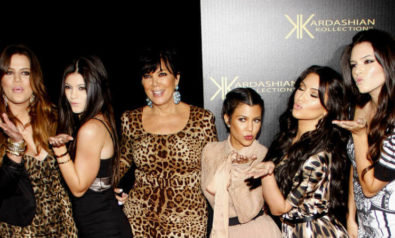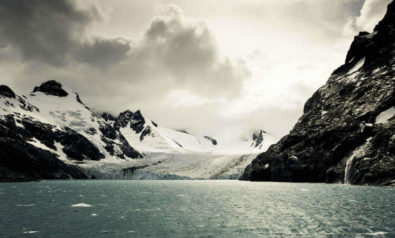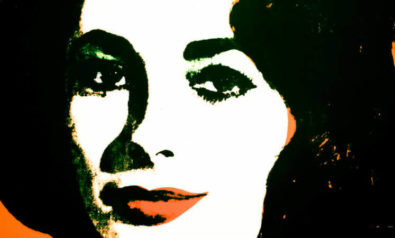For Antarctic explorer Ernest Shackleton, fame and fortune went together like a gin and tonic.
Ernest Henry Shackleton, the eldest son of tenant-farming parents, was born on February 15, 1874, at Kilkea House, County Kildare, Eire. He was the oldest male and, therefore, the “elder statesman” of eight sisters (one older than him) and one brother. His sibling role might well have shaped his destiny as a leader. His later exploits in the frozen and mysterious Antarctic regions marked him out to be, quite simply, a leader of men par excellence.
Having transmuted from tenant-farmer to newly qualified medical doctor, Shackleton senior gathered his family tribe about him, crossed the Irish Sea and ventured into the suburbs of south London. There, at the tender age of 13, a young Ernest attended the rarefied atmosphere of Dulwich College for boys. He was not the most-engaged student and never the scholar. He did, however, embrace the works of Keats and Browning and his love of poetry stayed with him throughout his life, on and off the ice.
Grabbing his chance (and with the tacit help and approval of Dr. Shackleton), he entered the Merchant Navy, aged 16. It was 1890 and a defining moment for the youngster. From mediocre, “landlubber,” academe Ernest positively flourished in his new-found maritime environment. In only a short span of time (eight years, in fact) and after many hours relishing the steep learning-curve of seamanship, he was a certified master mariner.
From Fame to Fortune
By 1900 Shackleton found himself on a troopship and, by pure chance, in contact with the son of a wealthy father who was in the throes of financing Britain’s first foray into Antarctic waters (under the leadership of Captain Robert Falcon Scott RN). And here is the rub: Shackleton loved the sea life, no question, but he wanted more, much more. He wanted, like many alpha males before (and after) him, fame.
Shackleton wanted to be recognized and paraded. Fame, he imagined, would lead inexorably onto fortune. Fame and fortune — a heady and inevitable mix (or so he thought). They went well together, like gin and tonic. Now aged 26, the Irishman desperately wanted to win his fortune and enjoy more of the “high life” — the life of the derring-do man about town, vibrant London City being a great favorite. He knew, also, that one day soon he would be expected to provide for a wife. In fact, four years later he was to marry the very capable Emily Dorman.
So, a plan was hatched and through a network of naval contacts Shackleton found himself sailing south as Captain Scott’s third officer on the expedition ship RRS Discovery bound for the polar regions. It was July 31, 1901.
The story of Shackleton’s four polar expeditions in 1901-02 (with Scott as leader), 1907-09, 1914-16 and 1921 (as leader) is the stuff of history. His success in 1907-09 — he reached within 97 geographical miles of the South Pole before, alas, being forced to turn back due to lack of food and the advancing austral winter — saw him return home to a popular hero’s welcome, a knighthood and endless celebrations and celebrity lectures.
Shackleton had found the fame he wished for. The ladies loved him. The ordinary people loved him. Even the royal family loved him. Curiously, however, the establishment — The Royal Geographical Society and many in the corridors of power — suffered him, often ungladly. For them he was the maverick Irishman, the merchant seaman, son of an anonymous doctor from Sydenham Hill, the man with the abrasive style who kissed the Blarney Stone once too often for their liking, the square peg in a round hole.
Scott, on the other hand, was the archetypal, well-spoken, subservient, clean-shaven, groomed, young Royal Naval officer who needed a career opportunity — and so they gifted it.
Whereas Scott’s expeditions of 1901-04 and 1910-12) were fully funded by the state and leading authorities, Shackleton’s polar forays were private ventures — never properly funded and always in debt, despite the philanthropy of some. For the Boss (Shackleton’s nickname on expeditions), fame arrived without fortune. In fact, in 1909 — on his much-heralded return from the South Pole — the Irishman failed (some kindly suggest “forgot”) to pay some of the men’s wages, and this after three years in his service and having been away from families and friends under extremely difficult conditions.
Such was Sir Ernest’s impecunity that he, along with Emily and his two (then) children, Raymond and Cecily, were forced to live in “exile” miles away in the coastal village of Sheringham, Norfolk. This rather large house was owned by an aunt of Emily’s. He simply could not afford to pay London rents. This domestic arrangement lasted just under a year. It was not Shackleton’s favorite place, and for chunks of time he was away on tour delivering charismatic lectures to adoring crowds of fans. The proceeds from these lectures went only a little way, however, to paying for the debts of the recent expedition. Expedition debts remained large and obstinate throughout his relatively short life.
Enduring the Antarctic
In 1914, Shackleton embarked on what became his most renowned expedition — his second trip to the South as leader and his third overall — the Imperial Trans-Antarctic Expedition (ITAE) in the SY Endurance. Having lost polar priority to the Norwegian, Roald Amundsen, arriving at the South Pole on December 14, 1911, and Robert Falcon Scott, a “close” second on January 17, 1912, Sir Ernest turned his attention to the one thing left for him if he was to attain the ultimate prize of unchallengeable fame and glory and, hopefully, financial security at last: the first crossing of Antarctica on foot.
On August 8, 1914, the ship slipped anchor at Millbay Docks, Plymouth, and headed south, toward the polar regions. The plan was to navigate through the (mostly uncharted) icy Weddell Sea toward the Antarctic continent and establish a base on the coast. From there, the Boss intended to cross the whole continent, west to east, via the pole, arriving at the Ross Sea coast some 1,800 miles later.
To make this possible, he sent a second expedition ship, SY Aurora, with another team of men to the Ross Sea (the Ross Sea Party, RSP) with the mandate to lay depots of food and equipment from the coast of Ross Island southward, to the foot of the Beardmore Glacier. Without these provisions, Shackleton would most certainly fail (with fatal consequences) in his bold quest.
In fact, the RSP was an unmitigated disaster. Three men were lost to the severe cold and sea ice, there was high tension among the men with two of them vying for supremacy, and the entire enterprise was appallingly planned both in terms of logistics and funding. That said, the depots were laid (in the face of huge adversity) and Shackleton’s path was made ready. Except he never appeared over the polar horizon.
Unbeknown to the RSP, the SY Endurance had been trapped in the Weddell Sea and sunk by the vice-grip of the early winter sea ice. Instead of achieving landfall and setting out on a journey to end all journeys across Terra Incognita, Shackleton was forced to take emergency action. He had to devise an escape mission that eventually involved: camping out on sea floes in mid-winter for just over five months; sailing for 14 days in makeshift converted lifeboats on the open sea to a desolate, uninhabited island; leaving 28 men on the island for four months; sailing with six men in a converted lifeboat for 16 days over a distance of 800 nautical miles to the island of South Georgia; and three men crossing the mountainous interior of the island (the first ever such crossing) to Stromness (a Norwegian whaling station) to finally raise the alarm. The subsequent quest to retrieve the men marooned on Elephant Island is another story.
A Hero and a Failure
Sir Ernest Henry Shackleton failed gloriously in his attempt to be the first to cross Antarctica. He failed, also, to reach the South Pole at any time. Out of the ashes of these failures, however, rose the phoenix of supreme endurance, ingenuity of leadership and survival. It is these attributes that are Shackleton’s heroic legacy and they inspire people to this day — whether they be captains of adventure or industry. Shackleton’s supreme example of leadership is, arguably, unsurpassable.
Ever since Roland Huntford’s controversial biography Shackleton was published, there has been a groundswell of interest in this enigmatic Irish explorer, often (and unfairly) at the expense of Scott’s polar reputation. Shackleton died on the outward journey of his fourth expedition to the South. He was in his cabin on-board the M/S Quest as it was moored at Grytviken, South Georgia. It was January 5, 1922. He was just a few days shy of his 48th birthday.
Shackleton was a hero and a failure. He was accoladed and ignored. On his return from the ice in 1917 there was a war on. Polar celebrities were out of fashion. From the turmoil of death and suffering people needed a new kind of hero, a new distraction: enter the pioneer aviator and film star.
There is a sad irony here. Shackleton had sought fame and fortune but, in the end, only transient fame arrived. There was to be no fortune. By 1920, just 18 months before the Irishman’s demise, Charlie Chaplin was a millionaire. In 1927, just five years later, Charles Lindbergh took his little plane, Spirit of St. Louis, on a precarious jaunt across the Atlantic and into unbelievable fame and a level of wealth Shackleton couldn’t even have imagined.
*[For more information, photographs and videos about Sir Ernest Shackleton’s Endurance expedition, visit www.shackleton100.com.]
The views expressed in this article are the author’s own and do not necessarily reflect Fair Observer’s editorial policy.
Photo Credit: Bobtokyoharris
Support Fair Observer
We rely on your support for our independence, diversity and quality.
For more than 10 years, Fair Observer has been free, fair and independent. No billionaire owns us, no advertisers control us. We are a reader-supported nonprofit. Unlike many other publications, we keep our content free for readers regardless of where they live or whether they can afford to pay. We have no paywalls and no ads.
In the post-truth era of fake news, echo chambers and filter bubbles, we publish a plurality of perspectives from around the world. Anyone can publish with us, but everyone goes through a rigorous editorial process. So, you get fact-checked, well-reasoned content instead of noise.
We publish 2,500+ voices from 90+ countries. We also conduct education and training programs
on subjects ranging from digital media and journalism to writing and critical thinking. This
doesn’t come cheap. Servers, editors, trainers and web developers cost
money.
Please consider supporting us on a regular basis as a recurring donor or a
sustaining member.
Will you support FO’s journalism?
We rely on your support for our independence, diversity and quality.













